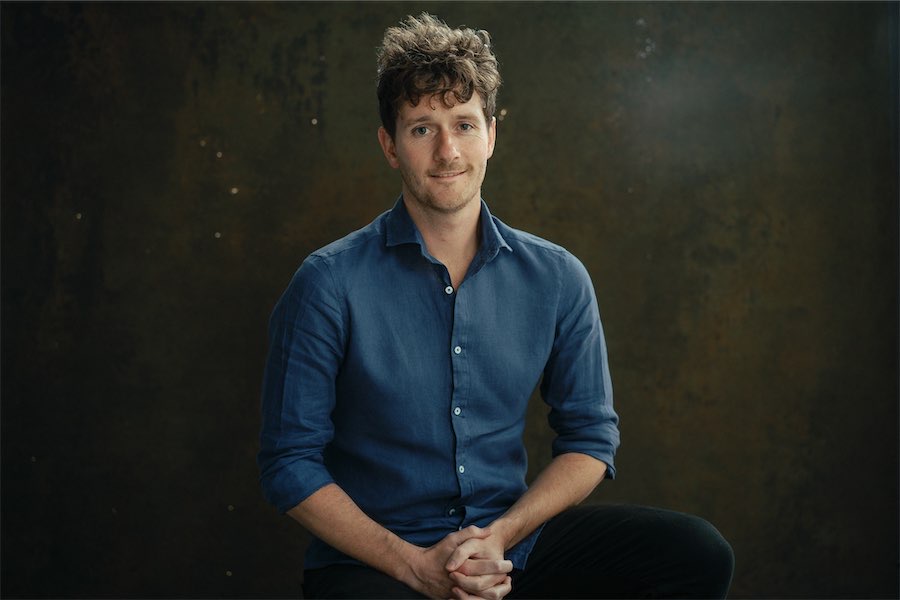
Photography / “VIEW2021”, PhotoAccess, Manuka Arts Centre until February 27. Reviewed by THEA McGRATH.
“VIEW2021” is PhotoAccess’ annual award exhibition showcasing the work of 11 emerging and re-emerging artists from across the region.
The works deeply reflect a year like no other, depicting an inward gaze as the world around became smaller and people were forced to slow down. The exhibition is quietly confident yet bold, a testimony to each artist’s tenacity and determination to continue to make.
Sofia Dimarhos’s work, “Physique” is a series of three sculptural images accompanied by a video work on an opposite wall. Her works are close-ups of the human body on high-shine paper. The video is also a close-up viewing and is equally sensual, mesmerising and repulsive, that I found myself going back for a second viewing.
David Lindesay’s single framed black and white print, “Looking Back at You”, captures a modern-day Roman sculpture — two striking male forms strongly posed, where the male body is fully formed and there to be viewed. Lindesay is posed squarely in the middle of the shot, while his counterpart leans at a horizonal axis through the frame. The focus of this image is squarely on Lindesay, hand on the camera trigger, boldly telling the viewer that he is the sculpture.
Tessa Ivison’s three colour images titled “Uncommon Road”, “Of Drought” and “Flooding Rain” are standalone images, but work well as a triptych set. They are lucidly vivid both in colour and focus. Her landscapes give the viewer that familiar fleeting feeling people get as they wake from a dream and as their memory slips away. Her works are intriguing and keep viewers lingering.
Adanna Obinna’s images are evocative, vibrant and full of colour, all brilliantly shot, sharp in focus and capturing the sitter Julia elegantly, mirroring diversity and women of colour. The series of three images are made up of a diptych set, “Melaninacious Rose” and “Melaninacious” and a single image, “Melaninaciously Colour”, the latter vibrant and drenched in dazzling yellow, pink and blues. The image is hung prominently and boldly holds its own.
“Mary had little lamb” by Janhavi Salvi is an intriguing interactive 3D work, reminiscent of an ’80s arcade game but with all the bells and whistles and quirks of modern programming. This work goes a long way towards the discussion on what contemporary photography looks like. The work does require assistance from the gallery staff to get the full experience.
Kayla Adams’ series of three images is understated. If the viewer blinks they may miss her two black white silver gelatin prints, “Woden House” and “Tress and Woden”, for her stand-alone and much larger colour work, “Woden Pitch and Putt”. This wonderfully grungy, larger image depicts a derelict suburban scene that draws the viewer in for a closer look.
Jordan Stokes giclée print series called “Burrinjuck” is a black and white landscape-lover’s delight. They are small in size and invite the viewer to come closer, where they then discover the serious undertone. What one may think is an idyllic foggy landscape is in fact smoke from the horrid summer of 2019/2020 – a landscape struggling under climate change.
Bridget Baskerville’s series “Art is the Void” gives off a beautiful sense of nostalgia and melancholy abandonment. These images reflect the artist looking inwards and I could almost feel the isolation of having been forced to return home due to lockdown. The last image in the series, a large brown couch, is a little overbearing in the space and could have been smaller.
Claire Fletcher’s simple, single print, “I am my Mother’s Daughter”, is hung on its own and holds the wall space entirely. A double exposure of herself overlaid with her mother, it depicts something children all feel, that they are their parents’ children and will grow to become their own version of them and replace them all too soon. This is a delightfully intimate images that tugs at the heart strings.
April Davis’s works also look inward and capture the caring spirit seen throughout the pandemic. The images simply titled “Waiting”, “Puzzling” and “Glimps” document Davis’s time staying with her grandmother during lockdown, ensuring she had what she needed and was not alone. But they also document the struggle many people felt by trying to maintain distance from those they love even when in the same household.
Alex Flannery’s work in this exhibition is a testimony to his hard work and determination. His black and white silver gelatin works in the series,” Regional NSW”, are simply framed in white, offset on white matting to allow the images to speak of his regional travel, giving an insight into an artist who thinks deeply and considers his images. The images are beautifully made both in capture and prints.
“View2021” confidently showcases a wide spectrum of what today’s emerging and re-emerging artists are making. The co-curators have woven together an exhibition that highlights the understated nature of the works to reflect their sentiments.
Who can be trusted?
In a world of spin and confusion, there’s never been a more important time to support independent journalism in Canberra.
If you trust our work online and want to enforce the power of independent voices, I invite you to make a small contribution.
Every dollar of support is invested back into our journalism to help keep citynews.com.au strong and free.
Thank you,
Ian Meikle, editor




Leave a Reply